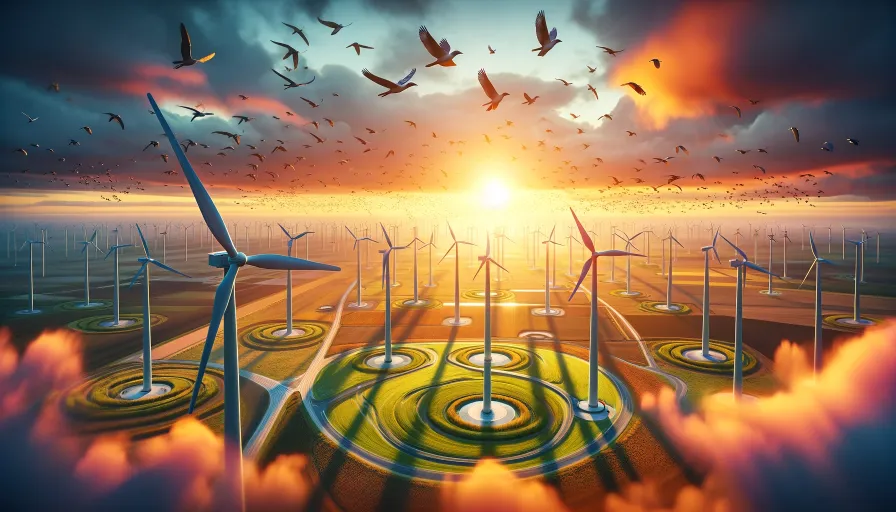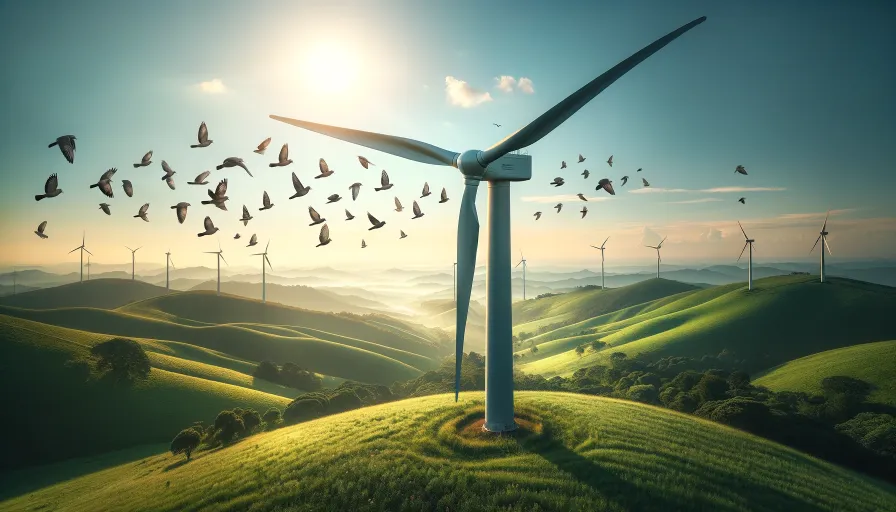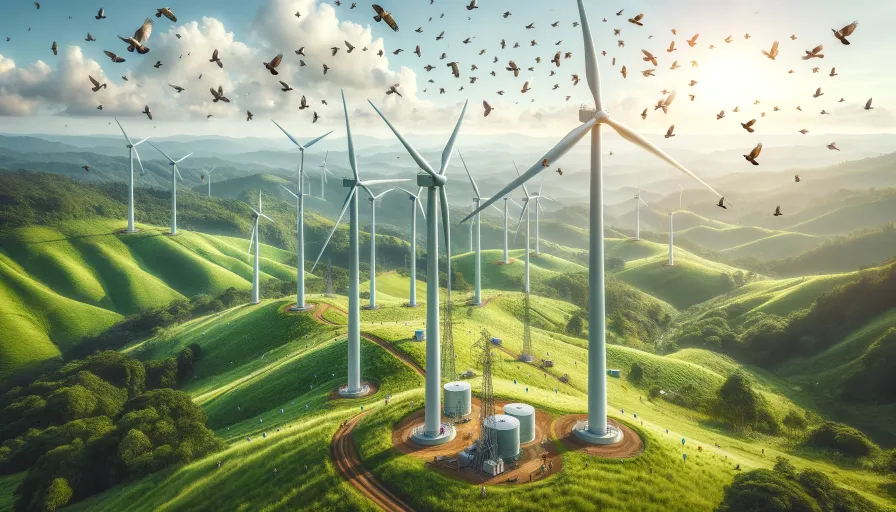Wind turbines have become a vital source of clean and renewable energy, playing a significant role in the global transition towards a more sustainable future. However, their immense size and the rotating blades pose potential risks to both human safety and wildlife, particularly birds. This article explores the importance of wind turbine safety and the measures taken to protect people and birds.
Table Of Content
We invite you to read: “Dutch Takes Unprecedented Step to Protect Migratory Birds, Halts Offshore Wind Turbines”

Wind Turbine Basics
Before delving into safety concerns, it’s essential to understand the basics of wind turbines. These towering structures convert wind energy into electricity through the rotation of large blades. They are typically located in areas with strong and consistent wind patterns, often near rural communities or open landscapes.
Human Safety
1. Safe Distance
Wind turbines can reach heights of up to 200 meters (656 feet) and have blade spans exceeding 100 meters (328 feet). To ensure human safety, these structures are placed at a minimum distance from homes, roads, and public areas. Regulations and guidelines vary by country, but a typical distance may range from 300 to 500 meters from residential properties.
2. Structural Integrity
Regular maintenance and inspection are crucial to ensuring the structural integrity of wind turbines. Technicians perform routine checks to identify any potential issues with the tower, foundation, or blades. Rigorous safety protocols and training are also essential for personnel working on or around wind turbines.
3. Emergency Shutdown
Modern wind turbines are equipped with advanced safety features, including automatic emergency shutdown systems. These systems activate in the event of severe weather conditions, equipment malfunctions, or other potential hazards, preventing catastrophic failures.
We invite you to read: “Protecting Wildlife: Dutch Set Global Precedence with Offshore Wind Farms Shutdown for Migratory Birds”

Protecting Birds and Wildlife
1. Avian Impact Studies
Before the installation of wind turbines, environmental impact assessments are conducted to determine potential risks to local wildlife, particularly birds and bats. These studies help identify sensitive areas and guide placement decisions to minimize harm.
2. Blade Design and Monitoring
To reduce bird collisions, wind turbine manufacturers have made significant improvements in blade design. Blades are now painted with ultraviolet-reflective materials, making them more visible to birds. Additionally, some turbines are equipped with sensors that can detect nearby birds and temporarily shut down to prevent collisions.
3. Bird Migration Monitoring
In regions with significant bird migration, radar systems and avian experts are often employed to monitor bird movements. Wind farm operators can then coordinate with these experts to temporarily shut down turbines during peak migration periods, further reducing the risk of bird strikes.
4. Habitat Restoration
To offset the ecological impact of wind farms, developers may invest in habitat restoration and conservation efforts in nearby areas. This can include reforestation projects, wetland restoration, and the creation of bird-friendly habitats to support local wildlife populations.
The Ongoing Effort for Safety
Wind turbine safety is an evolving field, with ongoing research and innovation aimed at reducing risks to both humans and birds. The industry collaborates with environmental organizations, regulatory bodies, and local communities to develop and implement best practices.
We invite you to read: “Google Buys 43MW of Wind Energy While Saving Birds”

Conclusion
Wind turbines are a crucial part of our sustainable energy future, but their deployment must be done responsibly. Ensuring human safety and protecting wildlife, particularly birds, should always be a top priority. By employing safe placement, advanced technology, and ongoing monitoring, we can strike a balance between harnessing clean energy and preserving our environment. As technology continues to advance, we can expect even more effective solutions for wind turbine safety in the years to come.
FAQs
Why is wind turbine safety important for people?
Wind turbines are massive structures with rotating blades, and safety measures are vital to prevent accidents and ensure the well-being of individuals living near or working with them.
How are people protected from wind turbines?
People are protected through safe placement, regular maintenance, and emergency shutdown systems on wind turbines, along with strict regulations and guidelines regarding their proximity to residential areas.
Why is wind turbine safety important for birds?
Birds can collide with the spinning blades of wind turbines, leading to harm or fatalities. Ensuring their safety is crucial for preserving biodiversity.
What measures are in place to protect birds from wind turbines?
Measures include avian impact studies, improved blade design, bird migration monitoring, and habitat restoration efforts to minimize the impact of wind turbines on bird populations.
How can the wind turbine industry balance energy production and wildlife conservation?
The industry collaborates with experts, environmental organizations, and regulatory bodies to develop and implement best practices, minimizing ecological impact while harnessing clean energy.
You May Also Like
- Wind Turbines and Wildlife: Balancing Energy and Ecology
- The Advantages and Challenges of Wind Energy Storage
- A Guide to Offshore Wind Farm Development and Construction
- How Large Is This Hybrid Solar & Wind Energy Facility In Europe?
- The Advantages and Disadvantages of Large-Scale Wind Energy Projects
External Links
- Dutch claim international first as North Sea offshore wind farms powered down to protect migratory birds
- Netherlands Offshore Wind Energy Act (Wet Wind op Zee)
- Officials Weigh Value of Saving Eagles and Wind Energy
- Our offshore wind farms
- 4 challenges to overcome when transmitting offshore wind power

